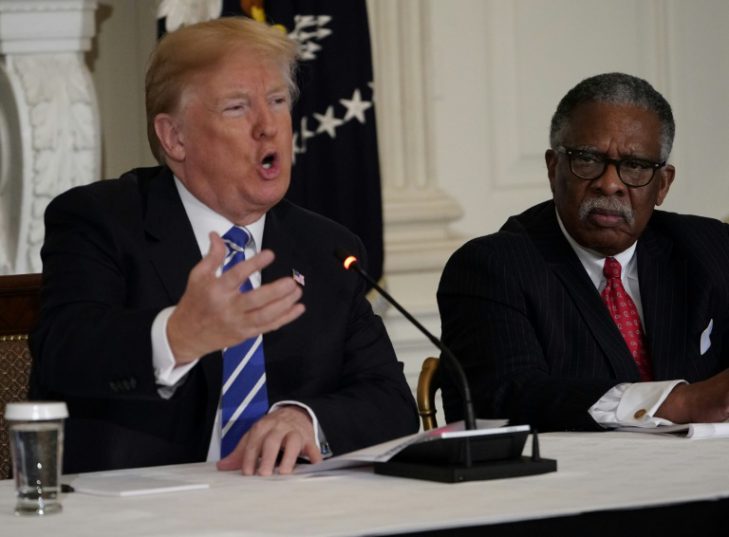ActionSA files application for IPID’s ‘top secret’ Phala Phala report
The blueprint for the 2019 fiscal year abandons the long-held Republican goal of balancing the federal budget within a decade, with deficits projected to peak in 2020 and persist into the foreseeable future amid an aggressive and costly defense buildup.
The initiative to revive crumbling US roads, bridges and airports includes just $200 billion in federal funds, which the White House says will spur at least another $1.3 trillion in investments from state governments and private investors.
Administration officials tout the infrastructure plan as part of a shift back to national priorities, with $50 billion dedicated to projects in rural areas, many of which favored Trump in the 2016 elections.
Trump said the shift comes in the wake of the wasteful military spending since the terrorist attacks of September 11, 2001. But he also touted a big boost in defense spending, including a revived nuclear arsenal that would leave the US armed forces “far in excess of anybody else.”
“We have spent $7 trillion in the Middle East, $7 trillion. What a mistake,” Trump said Monday.
“And we’re trying to build roads and bridges and fix bridges that are falling down and we have a hard time getting the money and its crazy.”
– Debate in Congress –

President Donald Trump on Monday unveiled an ambitious proposal to renew American infrastructure as part of budget that calls for stunning rise in debt and trillions in cuts to social spending
Over 10 years, the White House proposal seeks to slash trillions in spending across the much of the federal government, with the knife going especially deep into spending on health and poverty.
It would eliminate former President Barack Obama’s signature health insurance program and cut more than $200 billion in food assistance for the poor while cutting medical programs aimed at the poor and older Americans.
Despite these cuts, the $4.4 trillion total budget proposal still increases spending by 10 percent over 2017.
The administration’s fiscal plan likely will have little real impact once debate begins in Congress, where lawmakers may find it hard to impose some of the big program cuts.
But White House budget proposals are an important signal of the administration’s priorities, with deficits forecast to peak at nearly $1 trillion in 2020 and drive up the federal debt by a stunning 61 percent over 2017 levels by 2028.
“It’s a messaging document,” said White House Budget Director Mick Mulvaney, a former Republican lawmaker long aligned with the Tea Party movement for fiscal restraint — which opposed President Barack Obama’s efforts to launch an infrastructure investment program during the recession.
He acknowledged the White House did not expect the document to become law but instead to set the tone among lawmakers.
But the spending plan is sure to raise the hackles of deficit hawks in Congress who will question how the government can justify such ambitious projects amid yawning revenue shortfalls.
Investment bank JPMorgan said Monday that Trump’s deficit was expected to surge to 5.4 percent of GDP in the 2019 fiscal year, the highest ever without a recession, and surpassed only by the deficit reached during the global financial crisis.
The plan is based on estimates the US economy will expand at a three percent annual clip for the next six years, a growth rate many economists say is unrealistic, even given the short-term bump from the massive tax cuts approved in December.
Trump is expected to host lawmakers from both major parties at the White House this week in an attempt to hammer out differences.
Senator Chuck Schumer, leader of the opposition Democrats in the upper house, on Monday accused the White House of asking the middle class, children and workers to shoulder the burden of tax “giveaways” to corporations.
Speaking on the Senate floor, he said it would be best for Congress to hash out spending levels on their own and “ignore” the president.
Trump “should have no illusions about his budget becoming law,” Schumer said. “It won’t become law.”
Download our app